
The Katipunan, officially the Kataastaasan Kagalang-galang na Katipunan ng mga Anak ng Bayan and abbreviated as the KKK, was a revolutionary organization founded in 1892 by a group of Filipino nationalists Deodato Arellano, Andrés Bonifacio, Valentin Diaz, Ladislao Diwa, José Dizon, and Teodoro Plata. Its primary objective was achieving independence from the Spanish Empire through an armed revolution. It was formed as a secret society before its eventual discovery by Spanish authorities in August 1896. This discovery led to the start of the Philippine Revolution.
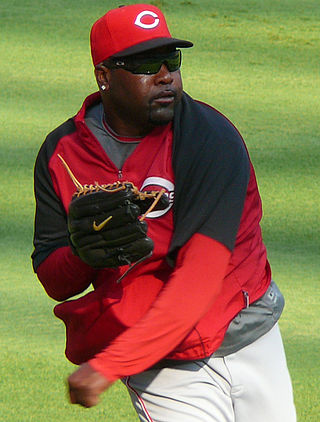
Arthur Lee Rhodes, Jr. is an American former Major League Baseball left-handed relief pitcher who is the current pitching coach for the Cleburne Railroaders of the American Association of Professional Baseball.

Pugad Baboy is a comic strip created by Filipino cartoonist Apolonio "Pol" Medina, Jr. The strip is about a Manila community of mostly obese people – "fat as pigs".
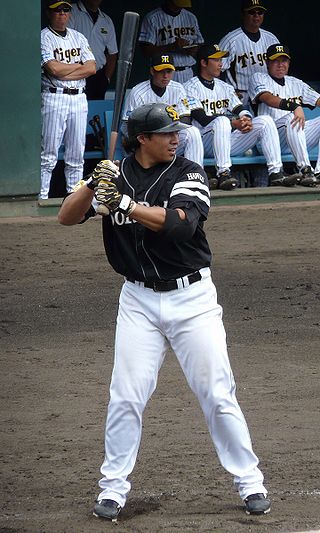
Christopher Louis Aguila is a former Filipino American Major League Baseball outfielder. He played parts of three seasons in the majors with the Florida Marlins (2004–2006) and part of the 2008 season with the New York Mets. He plays all three outfield positions.
ʿĀmir ibn ʿAbd Allāh ibn al-Jarrāḥ, better known as Abū ʿUbayda was a Muslim commander and one of the Companions of the Prophet. He is mostly known for being one of the ten to whom Paradise was promised. He remained commander of a large section of the Rashidun Army during the time of the Rashid Caliph Umar and was on the list of Umar's appointed successors to the Caliphate, but died in the Plague of Amwas in 639 before Umar.

Antonio Narciso Luna de San Pedro y Novicio Ancheta was a Filipino pharmacist and army general who fought in the Philippine–American War before his assassination on June 5, 1899 at the age of 32.

Ladislao Diwa y Nocon was a Filipino patriot who was among the founders of the Katipunan that initiated the Philippine Revolution against Spain in 1896.
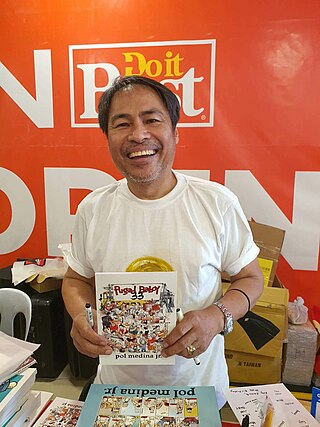
Apolonio "Pol" Medina Jr. is a Filipino cartoonist best known for his comic strip Pugad Baboy.
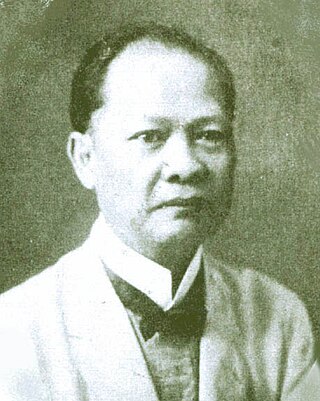
Julio Nakpil y García was a Filipino musician, composer and a General during the Philippine Revolution against Spain. He was a member of the Katipunan, a secret society turned revolutionary government which was formed to overthrow the Spanish government in the Philippines. His Katipunan adoptive name was J. Giliw or simply Giliw. He was commissioned by Andres Bonifacio, President of the Insurgent Tagalog Republic, to compose a hymn which was intended to become the National Anthem of the Tagalog Republic. That hymn was entitled "Marangal na Dalit ng Katagalugan". Thus, to some, he is remembered as the composer of the first national anthem of the Philippines. He is also a known huge critic of Emilio Aguinaldo.

Gorkys Gustavo Hernández Lugo is a Venezuelan professional baseball outfielder who is a free agent. Hernandez signed with the Detroit Tigers in 2005. He previously played in Major League Baseball (MLB) for the Pittsburgh Pirates, Miami Marlins, San Francisco Giants, and Boston Red Sox. He is signed to the Caribes de Anzoátegui of the Venezuelan Professional Baseball League.
Anastacio Tanchanco Caedo was a Filipino sculptor. His style of sculpture was classical realist in the tradition of his mentor, Guillermo Tolentino.
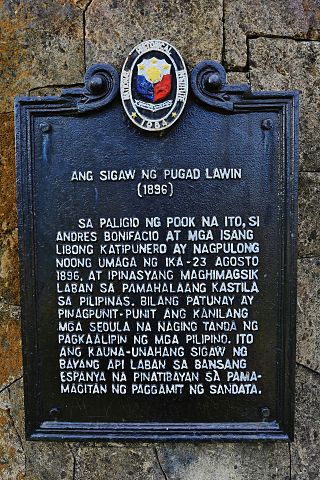
The Cry of Pugad Lawin was the beginning of the Philippine Revolution against the Spanish Empire.

Pupung is a daily comic strip created by Filipino cartoonist Washington "Tonton" Young. Appearing in the broadsheet Manila Bulletin, the strip revolves around its title character, a young boy, and his family and household. Pupung's family maintains a lugawan, a restaurant which mainly serves rice congee dishes.
Khalid ibn al-Walid ibn al-Mughira al-Makhzumi was a 7th-century Arab military commander. He initially headed campaigns against Muhammad on behalf of the Quraysh. He later became a Muslim and spent the remainder of his career in service to Muhammad and the first two Rashidun caliphs: Abu Bakr and Umar. Khalid played the leading command roles in the Ridda Wars against rebel tribes in Arabia in 632–633, the initial campaigns in Sasanian Iraq in 633–634, and the conquest of Byzantine Syria in 634–638.

Nicasio "Asiong" Rodriguez Salonga, nicknamed the "Hitler" or "Hito" of Tondo, was an infamous Filipino gangster whose notorious life had been portrayed in several movie versions in 1961, 1977, 1990 and 2011.
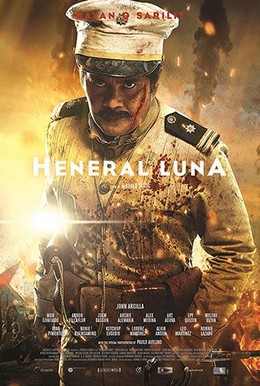
Heneral Luna is a 2015 Filipino epic war film starring John Arcilla as the titular character Antonio Luna who led the Philippine Revolutionary Army during the early phases of the Philippine–American War. Directed by Jerrold Tarog and produced by Artikulo Uno Productions, the film received critical acclaim from critics, praising its cinematography, writing, acting and plot. The film was selected as the Philippine entry for the Best Foreign Language Film at the 88th Academy Awards but it was not nominated.

SPO4 Santiago: Sharpshooter is a 1996 Filipino biographical action film directed by Pepe Marcos. The film stars Ramon "Bong" Revilla Jr. in the title role. The film is based on the life of Jaime Santiago, Sr., a former police officer who is currently a presiding judge of the Regional Trial Court in Manila.
Luis Fajardo y Ruíz de Avendaño,, known simply as Luis Fajardo, was a Spanish admiral and nobleman who had an outstanding naval career in the Spanish Navy. He is considered one of the most reputable Spanish militaries of the last years of the reign of Philip II and the reign of Philip III. He held important positions in the navy and carried out several military operations in which he had to fight against English, Dutch, French and Barbary forces in the Atlantic, the Caribbean and the Mediterranean. He is known for the conquest of La Mamora in 1614.















